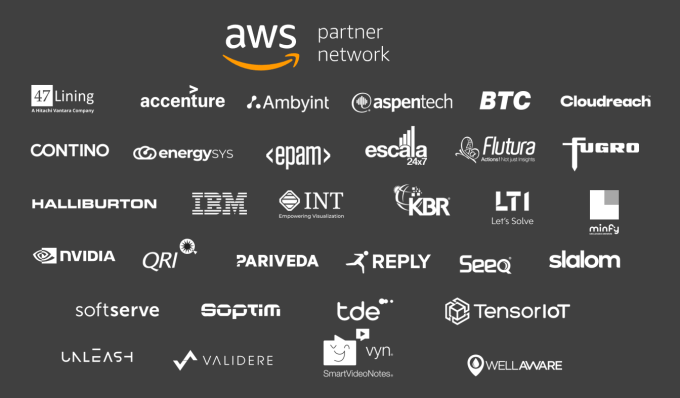Hey everyone, and welcome back to Chain Reaction
In our Chain Reaction podcast this week, Anita and I chatted with Slow Ventures’ Jill Gunter on why there are so many dang blockchains out there and if we’re headed to a future where everything is built on a single ‘chain. More details below.
Last week, we chatted a bit about the political isolation of Bitcoin that’s happening as a result of its energy footprint. In the podcast this week, we talked about how the Wikimedia Foundation outlawed crypto donations after accepting them for 8 years just because of the the energy footprint of Bitcoin and Ethereum. More than a decade in, this saga is only getting started. This week, we talked about how the crypto cops are trying to keep up with the web3 explosion.
You can subscribe on TechCrunch’s newsletter page and get this in your inbox Thursday afternoon. Follow me on Twitter while you’re at it so you can get important info like some crucial NFT etiquette.

the hottest take
This week, the government’s top crypto cops got some new funding to build out their team and they issued a nice little press release to tell the crypto industry that they’re coming for them. The SEC is expanding the team from 30 to 50 and renaming the previously titled “Cyber Unit” to the “Crypto Assets and Cyber Unit.” Hiring up to 20 additional enforcement officers is a big deal for the SEC, though in cryptoland that kind of headcount is what comes to most startups after a seed fundraise.
It’s always been an uphill battle for the SEC, but 10 years ago the threat of someone spinning up securities willy nilly from their basement wasn’t quite what it is today. The crypto faucet has released thousands upon thousands of suspect projects that I’m sure the regulatory body would like to touch, but for the time being they’re left with the nearly impossible task of moderating an industry that’s exploding and expanding its ambitions with at-most modest regard for the spirit of securities law.
As we touched on a bit in the podcast this week, the news of the SEC crypto unit’s expansion wasn’t welcomed warmly by folks in the industry, who say what they want is more guidance before there’s more enforcement. This isn’t entirely surprising, of course. It’s always been a nice little talking point for crypto companies on the topic of regulation — they can say that they actually want more regulation, because they know how far out most of that regulation is. Then, when action is eventually taken against them by the government they can complain that the under-resourced agency has it out for them because they’re singling them out over others who are doing the same thing. This has been the case for a while now.
This isn’t to say the SEC has done nothing, I’m sure they’re much more focused on big ticket cases at this point. The agency says they’ve brought more than 80 “enforcement actions” against fraudulent and unregistered offerings “resulting in monetary relief totaling more than $2 billion.” That’s a nice chunk of change but still a drop in the bucket.
Now, for the SEC’s part, they say that they are focused on using their beefed up team to crack down on fraudulent or illicit activity in the following areas: Crypto asset offerings, Crypto asset exchanges, Crypto asset lending and staking products, Decentralized finance (“DeFi”) platforms, Non-fungible tokens (“NFTs”), and Stablecoins. That’s… pretty much everything there is, though they didn’t specifically say anything about the metaverse I suppose… For folks warning of an imminent regulatory crackdown on crypto, I think it’s important to set expectations and take stock of who exactly is on the other side of the equation.
pod #3
Hello Chain Reaction friends! It’s Anita here again with an update on our latest podcast episode.
Yuga Labs’ chaotic NFT land sale stole the show in the crypto world this week, temporarily clogging the entire Ethereum network and leaving some users to pay thousands of dollars in gas fees for NFTs they never actually got. Yuga has pledged to refund gas fees on the failed transactions, but the crypto community has been abuzz with all sorts of hot takes and even conspiracy theories about why and how we got here, which Lucas and I unpacked on the show.
Our guest this week was Jill Gunter, venture partner at Slow Ventures and co-founder of a new, privacy-focused layer-one blockchain, Espresso Systems. I already got in the weeds with Jill in my article about Espresso after its Series A round last month, so for this week’s pod, Lucas and I asked her some bigger questions we’ve been mulling over, like why there are so many different blockchains in the first place and what it will take for tradfi to get comfortable with crypto.
Subscribe to Chain Reaction on Apple, Spotify, or your alternative podcast platform of choice to keep up with us every week.
follow the money
Where startup money is moving in the crypto world:
- Crypto publication Decrypt raises $10 million Hack VC, Canvas Ventures, others
- ‘Physical’ NFT marketplace Americana gets $6.9 million from Seven Seven Six
- DAO tooling startup Syndicate raises $6 million from a16z, Carta, others
- NFT sports betting app Stakes nabs $5.3 million from DCG
- DeFi startup MYSO raises $2.4 million from Huobi
- Metaverse eSports group Team DAO gets $5 million from Klaytn and Animoca
- Web3 sports platform OneFootball scores $300 million from Liberty City Ventures
- Crypto wallet app Argent grabs $40 million from Index
- Layer 2 blockchain Minka raises $24 million from Tiger
- NFT/crypto wallet Venly gets $23 million from Courtside Ventures
added analysis
Some more crypto analysis from our TechCrunch+ subscription service curated by Jacquelyn Melinek
Why Axie Infinity’s co-founder thinks play-to-earn games will drive NFT adoption
The popular play-to-earn crypto game Axie Infinity hit huge strides in 2021 from a massive spike in users to its total revenue rising over 50,000% from the same time last year. But as we’re almost halfway through 2022, a question stands: Is Axie holding up to its hype? Data is saying not quite, but Axie’s Co-founder Jeff “Jiho” Zirlin is unfazed. “You can’t have exponential growth all the time; there is a refractory period,” he said, but the game has more plans in the pipeline for the next growth cycle.
Crypto Bahamas signals stronger ties between old and new worlds of finance
I may be recovering from a sunburn, but don’t feel bad for me. I was down in the Caribbean at Crypto Bahamas, a conference co-hosted by crypto exchange FTX and investor forum SALT, where over 2,000 invite-only attendees discussed the nature of crypto as it grows in the traditional finance market and what’s needed for the future of this nascent digital asset industry to succeed. The event also was significant because this was both FTX and SALT’s first crypto-focused conference and seems to be the beginning of a bridge being built between the two worlds of traditional finance and decentralized finance.
Bitcoin miners say energy efficiency and regulatory certainty are crucial for the industry’s success
Speaking of Crypto Bahamas…some of the biggest names in bitcoin mining at the event took the stage and talked about what they think is needed first and foremost for this industry to succeed: efficiency and regulatory clarity. Once there is regulation in pace, the pace of innovation could pick up for miners across the US, the panelists said. But what does this mean for the energy industry as a whole?
Have a great weekend! And remember, you can subscribe on TechCrunch’s newsletter page and get this in your inbox Thursday afternoon.



